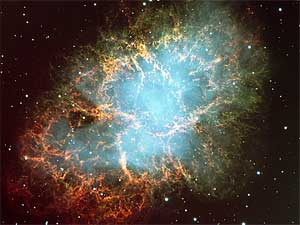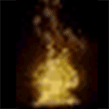
“The most beautiful emotion we can experience is the mysterious. It is the fundamental emotion that stands at the cradle of all true art and science. He to whom this emotion is a stranger, who can no longer wonder and stand rapt in awe, is as good as dead, a snuffed-out candle. To sense that behind anything that can be experienced there is something that our minds cannot grasp, whose beauty and sublimity reaches us only indirectly: this is religiousness. In this sense only, I am a devoutly religious man.”
Albert Einstein, quoted in: Isaacson, W. (2007). Einstein & Faith. Time Magazine, Canadian Edition, April 16, 2007, P.35
Baba Virsa Singh:
“Dharam is the greatest science. Hundreds and in some cases thousands of years ago, visionaries revealed to us what scientists are just now heralding as their latest discovery. The visionaries simply closed their eyes, sat comfortably in meditation, and described what they saw. They did not have to spend huge sums on research or waste battery cell power. We human beings have many powerful brain cells. Once they are developed through meditation we can observe the entire universe—from the microscopic to the vast expanse of the cosmos.
What is meditation? concentrating on something, researching it, looking deeply into it, until you reach a conclusion. Whether you are conducting scientific research or meditating and having visions, both are a matter of inner concentration.
The stronger and clearer your mind, and the more you are able to focus your thoughts, the better scientist you will become. Likewise, the clearer your mind and the greater your power of concentration, the better saint you will become. Worry, fear, and pressure should not enter, for they will torture your mind. In reality, meditation is our mind’s defense. It keeps out the bad and develops the good.
Actually, scientists are only proving what has already been revealed. Our country’s ancient religious texts had already told us that some stars are so far away that it will take tens of millions of years for their rays to reach the earth. Five hundred years ago, while in meditation, Guru Nanak once said, ‘This sun you see is not the only sun—there are tens of millions of suns. This moon is not the only moon—there are tens of millions of such bodies.’ When you see that celestial drama, you begin to think about this earthly drama in which we live. This is just a tiny speck in the vastness of the cosmos.
Sometimes a scientist becomes worried when the parts of his research do not fit together. At that point, he needs the help of an enlightened one to share his store of knowledge and clear the obstruction in the scientist’s mind. Then his research can move ahead. The scientist knows about the elements, but sometimes they may confuse him. Inner spiritual knowledge will never confuse a person.
Unfortunately, though the fields of the scientist and the saint are related, they never collaborate. The scientist feels, ‘I am so learned, why should I sit with an illiterate person?’ For his part, the saint feels, ‘The scientist is an atheist. What have I to do with him?’ Where there is dharam, oceans and oceans of knowledge have coalesced. It is our misfortune that we have not been able to explain dharam in a way that scientists could understand.
Both the scientist and the saint are studying the universe. The scientist studies its components; the saint studies the One who made them. But both conclude that no matter how much they have discovered, there is still endless vastness beyond. When the scientist and the saint ultimately sit together, the knowledge of the universe will increase, and humanity will benefit greatly. Then the scientist will start believing in God; the saint already does so.
 Gobind Sadan
Gobind Sadan